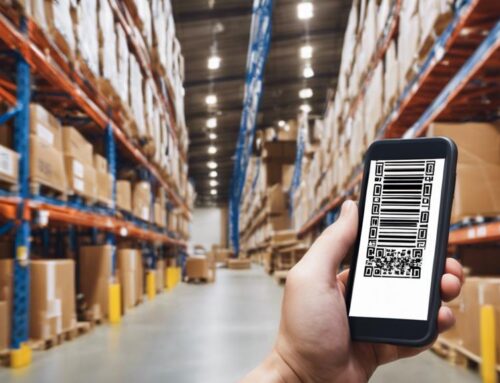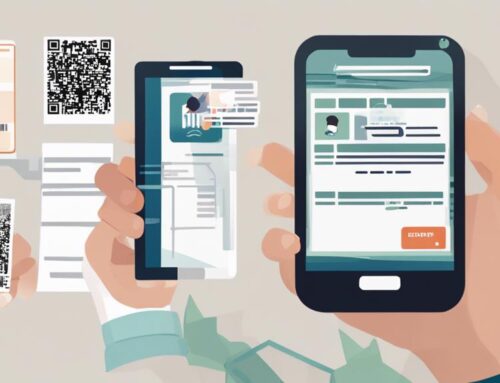Imagine your workflow as a well-oiled machine, each component smoothly interlocking to drive efficiency. Now, envision enhancing this system by seamlessly integrating mobile data capture. But how do you ensure this integration is successful and beneficial for your operations? Let’s explore the key strategies and considerations that will help you navigate this process with confidence and precision.
Analyze Current Workflow
To effectively integrate mobile data capture into your workflow, the initial step is to thoroughly examine your current processes and procedures. Begin by conducting a comprehensive workflow mapping exercise to understand how information flows within your organization. Identify key touchpoints where data is collected and recorded. Next, conduct an efficiency assessment to evaluate the effectiveness of your current data capture methods. Look for bottlenecks, redundancies, or areas where manual data entry slows down the process.
As you analyze your current workflow, pay close attention to the types of data being captured, the frequency of data entry, and the accuracy of the information. Consider how mobile data capture could streamline these processes and improve overall efficiency. Look for opportunities to automate data capture through mobile devices, reducing the likelihood of errors and saving time for your team. By gaining a deep understanding of your current workflow and efficiency levels, you can effectively plan for the integration of mobile data capture technology.
Identify Areas for Improvement
Identifying areas for improvement is a crucial step in enhancing the efficiency and effectiveness of your workflow. To kickstart this process, examine your current workflow closely. Look for bottlenecks, redundancies, or any steps that seem to slow down operations. By pinpointing these areas, you pave the way for process optimization and efficiency enhancement.
Begin by collecting feedback from your team members who are directly involved in the workflow. Their insights can shed light on pain points and suggest practical improvements. Analyze data gathered from your current workflow to identify patterns or trends that indicate where improvements are needed. Look for opportunities to streamline tasks, automate manual processes, or eliminate unnecessary steps.
Consider the technology you are currently using and assess whether it adequately supports your workflow requirements. Evaluate if integrating mobile data capture can address any identified areas for improvement. By systematically identifying these areas and addressing them through strategic changes, you can enhance overall efficiency and productivity within your workflow.
Research Possible Solutions
Consider exploring various solutions that align with your identified areas for improvement. Begin by conducting a thorough cost analysis to understand the financial implications of each option. Evaluate the initial setup costs, ongoing maintenance fees, and potential return on investment for each solution. This will help you make an informed decision based on your budget and expected benefits.
Next, delve into vendor comparison to assess the reputation, reliability, and customer service of each potential provider. Look into their track record, client reviews, and the level of support they offer. Choosing a reputable vendor is crucial for a smooth implementation process and ongoing assistance when needed.
Select an Appropriate Solution
When selecting an appropriate solution for integrating mobile data capture into your workflow, it is vital to carefully analyze the compatibility of each option with your existing systems and processes. Start by evaluating the mobile device compatibility of the solutions you are considering. Ensure that the chosen solution works seamlessly across various devices your team may use, such as smartphones and tablets. This compatibility will guarantee smooth data capture regardless of the device being utilized.
Furthermore, prioritize data security considerations when selecting a solution. Look for features like encryption, secure data transmission, and user authentication to safeguard the information being captured. Data breaches can have severe consequences, so it is crucial to choose a solution that prioritizes the security of your captured data.
Plan for Integration
To effectively plan for integration of mobile data capture into your workflow, it is essential to map out the specific steps and processes involved in incorporating this new technology seamlessly. Start by prioritizing data security measures. Ensure that the mobile data capture solution you choose has robust encryption protocols to safeguard sensitive information. Conduct a thorough risk assessment to identify potential vulnerabilities and develop strategies to mitigate them effectively.
User training is another crucial aspect to consider during the integration process. Provide comprehensive training sessions for employees to familiarize them with the mobile data capture system. This will help optimize their usage, minimize errors, and ensure data accuracy. Encourage open communication channels for users to ask questions and seek assistance when needed.
Create a detailed timeline outlining key milestones and deadlines for the integration process. Assign responsibilities to individuals or teams to streamline implementation. Regularly assess progress and address any challenges promptly to keep the integration on track. By planning meticulously for data security and providing adequate user training, you can successfully integrate mobile data capture into your workflow.
Frequently Asked Questions
Can Mobile Data Capture Apps Be Integrated With Existing CRM Systems?
Yes, mobile data capture apps can be integrated with existing CRM systems. Ensure system compatibility for seamless data migration. Provide user training for effective use. The integration process involves linking the apps to the CRM system for synchronized data flow.
How Can Data Security and Privacy Be Ensured in Mobile Data Capture?
To ensure data security and privacy in mobile data capture, implement compliance measures and encryption protocols. Manage user permissions tightly to control data access. Utilize robust data encryption methods to safeguard sensitive information and prevent unauthorized access.
Are There Customizable Options Available for Mobile Data Capture Solutions?
Looking for customization options in mobile data capture solutions? You can integrate them with CRM systems to streamline data management. Ensure seamless workflow by tailoring fields, forms, and workflows to meet your unique business needs.
Can Mobile Data Capture Apps Handle Offline Data Collection?
Yes, mobile data capture apps can handle offline data collection efficiently. They allow remote access to capture data in areas with limited connectivity. Once online, data synchronization ensures seamless integration of offline data into your workflow.
What Kind of Technical Support Is Provided for Integrating Mobile Data Capture?
When integrating mobile data capture, you’ll benefit from robust technical support. Training resources ensure smooth implementation. Troubleshooting assistance resolves issues promptly. User feedback guides software updates, optimizing your workflow for efficiency and accuracy.




